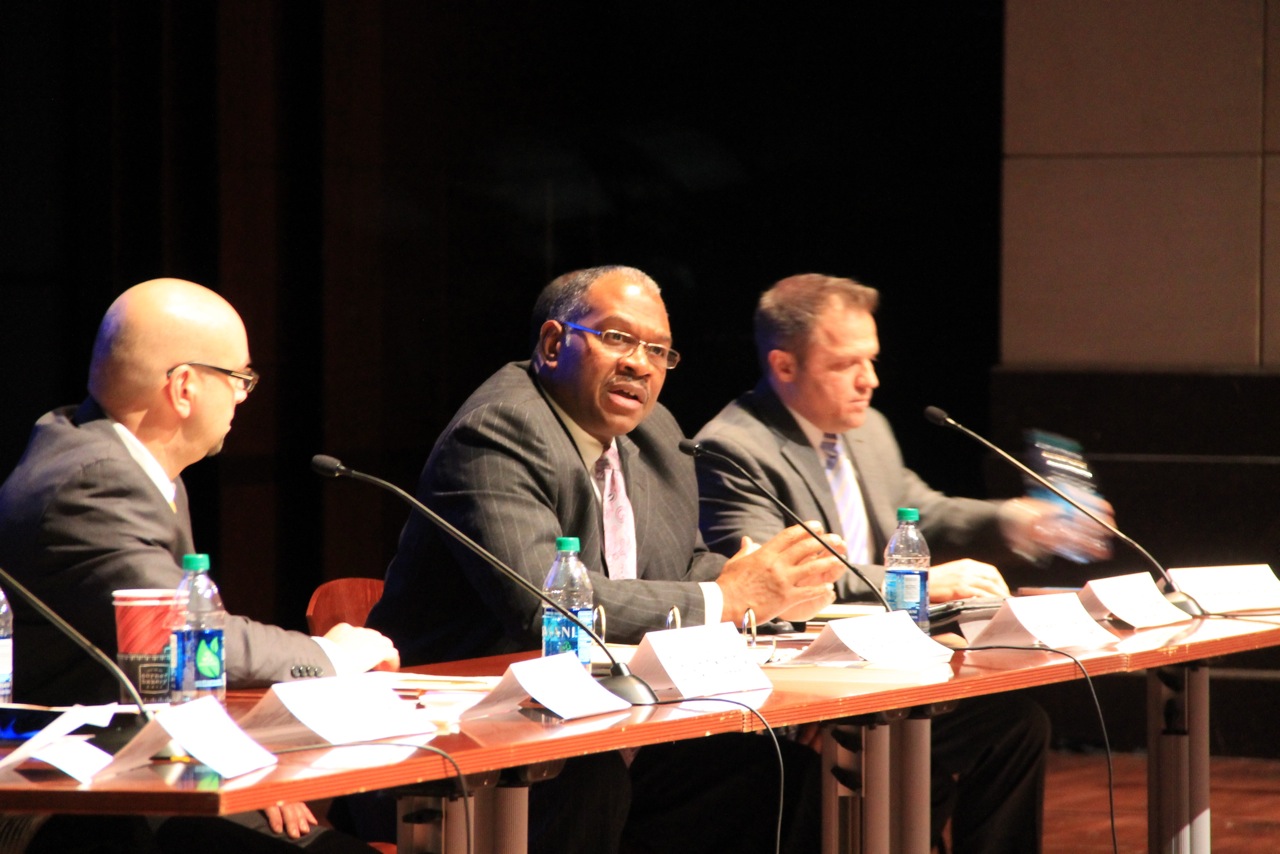 WASHINGTON, D.C. — Dr. Aaron Kupchik was putting his 7-year-old daughter to bed when she asked him what the criminal justice professor would talk about on Capitol Hill the next day. He explained his basic argument: a positive environment at school helps students behave better.
WASHINGTON, D.C. — Dr. Aaron Kupchik was putting his 7-year-old daughter to bed when she asked him what the criminal justice professor would talk about on Capitol Hill the next day. He explained his basic argument: a positive environment at school helps students behave better.
Kupchik’s daughter looked at him. That made her think of a boy in her second-grade class who was frequently disruptive, she told him. She thought he acted like that because he didn’t understand the worksheets, but he didn’t want to appear stupid in front of the other kids. If she were the teacher, Kupchik’s daughter told him, she’d help the boy with his worksheets.
Now it was Kupchik’s turn to look at his daughter. “How do you get this, but so many school principals don’t?” he asked her.
Kupchik, an associate professor of sociology and criminal justice at the University of Delaware, narrated this story on Capitol Hill on Tuesday. He spoke at a summit on preventing youth violence, organized by Rep. Bobby Scott (D-Va.) and the House Democratic Gun Violence Prevention Task Force in response to last month’s mass shootings at an elementary school in Newtown, Conn.
The two-hour gathering brought together experts in criminal and juvenile justice, mental health, law enforcement, education and child development to share research and perspectives on measures to curb violence by young people. Speakers emphasized the need to adopt programs that have been scientifically proven to be effective in curbing violence, especially those that emphasize positive youth development, and pushed for Congress to pass the Youth PROMISE (Prison Reduction through Opportunities, Mentoring, Intervention, Support, and Education) Act, H.R. 2721, which emphasizes intervention and prevention.
Research shows that putting more police officers in schools does not make schools safer, Kupchik told attendees gathered in the Congressional Auditorium in the Capitol Visitors Center. Police officers were often poorly equipped for the job of untangling adolescent conflicts, he said, and only served to transform schools from environments of academic and emotional support into ones that emphasized law enforcement and crime.
Proponents of such measures often offer emotional arguments – “We have to do everything we can to protect our children!” — that assume the only constraint to putting more officers in schools is a lack of resources, Kupchik said. But it’s not a question of money, he said: evidence shows that adding officers to schools actually does more harm than good.
Instead of beefing up the presence of law enforcement, schools should emphasize developing relationships between students and staff, making more counselors and mentors available, and treating students as partners in school governance so that they feel a sense of ownership, Kupchik said.
Most importantly, he said, schools should train teachers in inclusive classroom management, which has been shown to reduce rates of arrests and suspensions. Managing student behavior can keep small classroom problems from turning into large ones, Kupchik said.
Sheriff Gabriel Morgan of Newport News, Va., said mentoring, multi-therapy and functional family therapy programs have also been shown to change youth behavior and reduce arrest rates. But because the changes were not immediate, it was hard to shore up support for such interventions, he said.
“Many people don’t want to think about prevention because they want this instant microwave solution,” Morgan said. “We can’t continue to look for instant gratification. Prevention takes time because it’s talking about changing a culture and changing the way children develop.”
Eliminating youth violence is “a massive undertaking” that will require a broad range of solutions, Morgan said.
Anyone looking for solutions – whether an educator, legislator, justice professional, law enforcement official or just a member of the public — can turn to an online directory like the federal website CrimeSolutions.gov, said Brian Bumbarger, the director of the Evidence-based Prevention and Intervention Support Center at Pennsylvania State University.
Crimesolutions.gov is a search engine that allows users to type in the community problem they are seeking to solve, and then find descriptions of evidence-based programs that address that problem within their type of community, Bumbarger said.
The website was developed in response to the recent movement for more information on evidence-based practices, said Phelan Wyrick, a senior adviser to the assistant attorney general in the Office of Justice Programs, speaking at a summit on violence prevention organized by the Institute of Medicine of the National Academies on Wednesday. The U.S. Department of Justice wanted to make it possible for people to access evidence, while “recognizing that not all of them are equipped for it,” Wyrick said.
“The information can be misused, yes,” Wyrick said. “But we think it’s important for people to know. Especially when the alternative is nothing.”



























